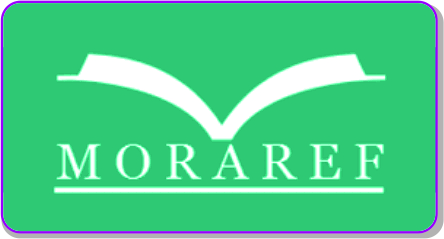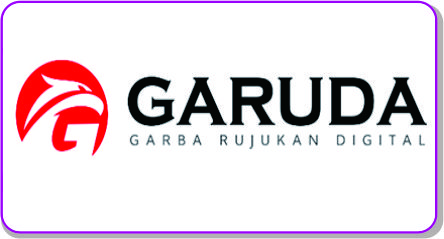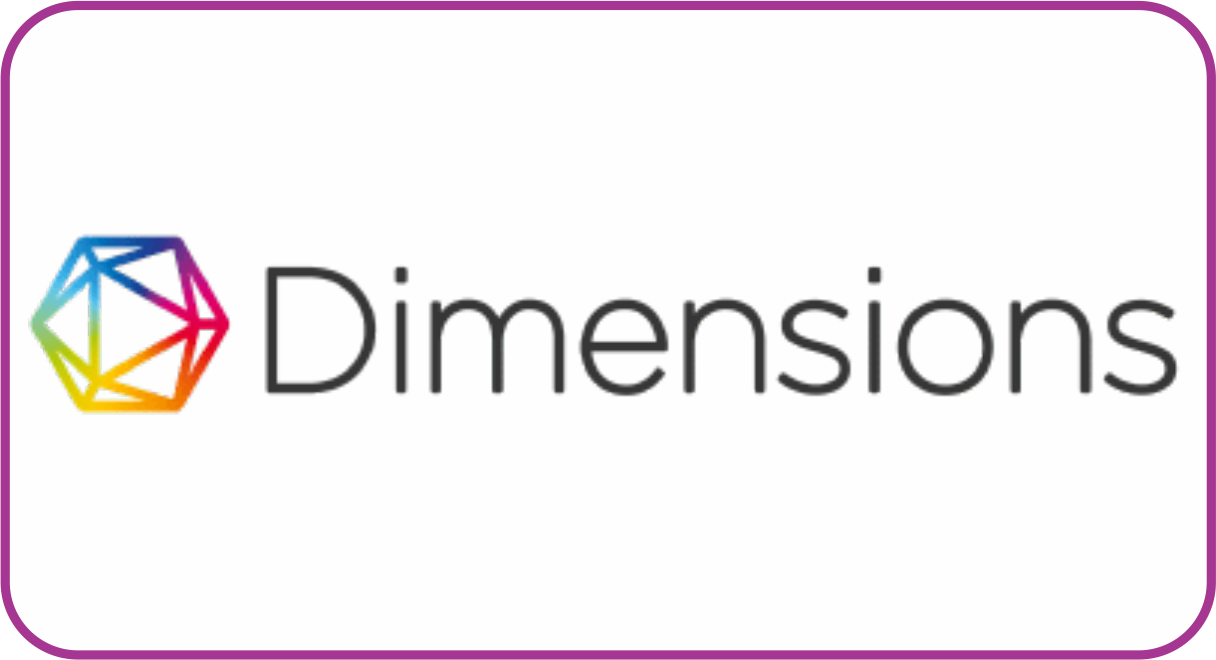Correlation Between Usage of Academic Word List and Journal Rankings on English Studies in Indonesia
DOI:
https://doi.org/10.30983/mj.v4i2.8538Keywords:
Academic Word List, Journal Ranking, Academic Writing Quality, Lexical RichnessAbstract
The development of scientific articles has dynamically improved, including in the English disciplines. Therefore, this study explores the relationship between using the Academic Word List (AWL) and the ranking of journals in English studies in Indonesia, with a particular focus on writing characteristics. Given the growing importance of academic vocabulary in language learning and the pivotal role of writing in academic success, this research aims to provide insights into how academic word usage correlates with journal quality. This study itself is quantitative research. 180 articles from 18 Sinta-accredited journals were analyzed using an electronic text analysis approach. The journals were chosen proportionally based on their Sinta’s rank. AntConc is used as the main application to analyze the lexical richness of the articles. The findings reveal that the overall lexical richness of the articles is 7.23%, with AWL words comprising 4.04% of the total vocabulary used. Despite these findings, statistical analysis indicates no significant correlation between the frequency of AWL usage and the journals' rankings. These results suggest that while AWL contributes to the lexical profile of academic writing, it does not directly influence journal ranking. Reasons could be assumed regarding these findings, such as journal’s editorial policies, authorial preference, and disciplinary variations. This study enhances our understanding of the elements of high-quality academic writing and offers valuable insights for teaching and learning academic writing. Teachers and lecturers of academic writing courses could explore and elaborate on AWL’s role in their teaching.
Abstrak
Perkembangan artikel ilmiah semakin dinamis, termasuk pada disiplin ilmu bahasa Inggris. Oleh karena itu, penelitian ini mengeksplorasi hubungan antara penggunaan Academic Word List (AWL) dan pemeringkatan jurnal dalam studi bahasa Inggris di Indonesia, dengan fokus khusus pada karakteristik penulisan. Mengingat semakin pentingnya kosakata akademis dalam pembelajaran bahasa dan peran penting menulis dalam keberhasilan akademis, penelitian ini bertujuan untuk memberikan wawasan tentang bagaimana penggunaan kata akademis berkorelasi dengan kualitas jurnal. Penelitian ini sendiri merupakan penelitian kuantitatif. 180 artikel dari 18 jurnal terakreditasi Sinta dianalisis menggunakan pendekatan electronic text analysis. Jurnal telah dipilih secara proporsional berdasarkan rangking Sinta. Dalam melakukan analisis terhadap lexical richness digunakan aplikasi AntConc. Temuannya mengungkapkan bahwa keseluruhan kekayaan leksikal artikel adalah 7,23%, dengan kata-kata AWL mencakup 4,04% dari total kosakata yang digunakan. Meskipun ada temuan ini, analisis statistik menunjukkan tidak ada korelasi yang signifikan antara frekuensi penggunaan AWL dan peringkat jurnal. Hasil ini menunjukkan bahwa meskipun AWL berkontribusi terhadap profil leksikal penulisan akademik, namun tidak secara langsung berhubungan dengan peringkat jurnal. Beberapa alasan yang diasumsikan menjadi dasar dari temuan, diantaranya kebijakan editorial dari jurnal, kecenderungan gaya menulis, dan ragam disiplim keilmuan. Studi ini meningkatkan pemahaman kita tentang unsur-unsur penulisan akademik berkualitas tinggi dan menawarkan wawasan berharga untuk pengajaran dan pembelajaran penulisan akademik. Para pengajar bagi kelas academic writing dapat secara lebih mengkaji dan mengelaborasi fungsi AWL dalam pembelajaran.
Kata Kunci: academic word lis, ranking jurnal, kualitas menulis akademik, kekayaan leksikal
References
Adolphs, S. (2006). Introducing Electronic Text Analysis. In Introducing Electronic Text Analysis. Routledge. https://doi.org/10.4324/9780203087701
Alhojailan, A. I. (2019). The Effect of Academic Vocabulary Use on Graduate Students’ Writing Assignment Scores. English Language Teaching, 12(9), 33. https://doi.org/10.5539/elt.v12n9p33
Andrew Newman, J., & Andrew, J. (2016). A Corpus-Based Comparison of the Academic Word List and the Academic Vocabulary List [Brigham Young University]. https://scholarsarchive.byu.edu/etd
Anthony, L. (2005). AntConc: Design and development of a freeware corpus analysis toolkit for the technical writing classroom. IEEE International Professional Communication Conference, 729–737. https://doi.org/10.1109/IPCC.2005.1494244
Arum, E. R., & Winarti, W. (2019). the Use of Antconc in Providing Lexical and Sintactical Information of the Texbook of Radiographic Positioning and Related Anatomy: a Corpus Linguistic Study. Jurnal Sosioteknologi, 18(1), 106–112. https://doi.org/10.5614/sostek.itbj.2019.18.1.8
Coxhead, A. (2006). A New Academic Word List. TESOL Quarterly, 40(1), 235–257.
Creswell, J. W. (2014). Research Design: Qualitative, Quantitative, and Mixed Methods Approaches (4th ed.). Sage Publication, Inc.
Csomay, E., & Prades, A. (2018). Academic vocabulary in ESL student papers: A corpus-based study. Journal of English for Academic Purposes, 33, 100–118. https://doi.org/10.1016/j.jeap.2018.02.003
Dang, T. N. Y., Coxhead, A., & Webb, S. (2017). The Academic Spoken Word List. Language Learning, 67(4), 959–997. https://doi.org/10.1111/lang.12253
Gholaminejad, R., & Sarab, M. R. A. (2021). A comparison of the academic word list and the academic vocabulary list: Should the avl replace the awl? Teflin Journal, 32(1), 167–182. https://doi.org/10.15639/teflinjournal.v32i1/167-182
Hernina, H., Karlina, Y., & Puspitasari, D. A. (2023). The Indonesian Terms of Disease Names: A Corpus Linguistic Study. OKARA: Jurnal Bahasa Dan Sastra, 17(1), 14–31. https://doi.org/10.19105/ojbs.v17i1.8571
Irham, I. (2022). Wacana Imigran Dan Pekerja Asing Di Indonesia: Studi Analisis Wacana Berbasis Linguistik Korpus. Dialektika: Jurnal Bahasa, Sastra Dan Budaya, 9(1), 44–57. https://doi.org/10.33541/dia.v9i1.4008
Iswari, W. P., Suhatmady, B., Asih, Y. U., Wardani, I., Ramadhan, A., & Anastasya, D. (2021). Using Concordance Software to Generate Academic Words in Applied Linguistics. Educational Studies: Conference Series, 1(1), 31–41. https://doi.org/10.30872/escs.v1i1.882
Jemadi, F., Wati, F., & Iku, P. F. (2019). Academic Words in the English Research Article Abstracts: the Coverage and Frequency. Vision: Journal for Language and Foreign Language Learning, 8(2), 133–140. https://doi.org/10.21580/vjv8i23935
Kothari, C. R. (2004). Research Methodology Methods and Techniques. In Analytical Biochemistry (Second, Vol. 11, Issue 1). New Age International Publishers. http://link.springer.com/10.1007/978-3-319-59379-1%0Ahttp://dx.doi.org/10.1016/B978-0-12-420070-8.00002-7%0Ahttp://dx.doi.org/10.1016/j.ab.2015.03.024%0Ahttps://doi.org/10.1080/07352689.2018.1441103%0Ahttp://www.chile.bmw-motorrad.cl/sync/showroom/lam/es/
Kwary, D. A., & Artha, A. F. (2017). The Academic Article Word List for Social Sciences. MEXTESOL Journal, 41(4), 1–11.
Lailiyah, M., & Setiyaningsih, L. A. (2021). Academic Vocabulary of EFL Students’ Writing: A Corpus-based Study. SENARILIP V, 5(Senarilip V), 28–32.
Lei, L., & Liu, D. (2016). A new medical academic word list: A corpus-based study with enhanced methodology. Journal of English for Academic Purposes, 22, 42–53. https://doi.org/10.1016/j.jeap.2016.01.008
Martin, W. E., & Bridgmon, K. D. (2012). Quantitative And Statistical Research Methods - From Hypothesis To Results. Jossey-Bass.
Mozaffari, A., & Moini, R. (2014). Academic Words in Education Research Articles: A Corpus Study. Procedia - Social and Behavioral Sciences, 98, 1290–1296. https://doi.org/10.1016/j.sbspro.2014.03.545
Nation, I. S. P. (2001). Learning Vocabulary in Another Language (C. A. Chapelle & S. Hunston (eds.)). Cambridge University Press.
Neuman, W. L. (2014). Social research methods: Qualitative and Quantitative approaches. In Pearson. https://www.amazon.co.uk/Social-Research-Methods-Quantitative/dp/0205786839/ref=sr_1_5?s=books&ie=UTF8&qid=1461496914&sr=1-5&keywords=social+research+methods+qualitative+and+quantitative+approaches
Pusparini, N. M. D. U. (2022). The Use of Corpus Linguistics in Preparing English Teaching Materials for Specific. World Journal of Corpus Linguistics, 1(1), 61–70.
Samsi, Y. S. (2019). Teaching Critical Discourse Analysis To Elt Learners Through Corpus Based Approach. Academic Journal Perspecitve: Education, Language, and Literature, 7(1), 33–40. https://doi.org/10.33603/PERSPECTIVE.V7I1.1814
Simbuka, S., Hamied, F. A., Sundayana, W., & Kwary, D. A. (2019). A Corpus-Based Study on the Technical Vocabulary of Islamic Religious Studies: A publication on the teaching and learning of English. TEFLIN Journal, 30(1), 47–71. https://eric.ed.gov/?id=EJ1223774
Sinta. (2023). Manual Book - Author.
Sinta Kemendikbud. (2024). https://sinta.kemdikbud.go.id/journals/index/
Sugiyono. (2007). Statistik Untuk Penelitian (p. 389). Alfabeta.
Sulaiman, N. A., Salehuddin, K., & Khairuddin, R. (2018). Academic word list knowledge of malaysian ESL undergraduates. GEMA Online Journal of Language Studies, 18(4), 1–14. https://doi.org/10.17576/gema-2018-1804-01
Sulong, W. M. W., & Ghazali, R. M. (2021). Using Hadith Corpus in Learning Arabic as a Second Language. Turkish Journal of Computer and …, 12(14), 5126–5133. https://turcomat.org/index.php/turkbilmat/article/view/11533
Therova, D. (2021). A Case Study of Academic Vocabulary in a Novice Student’s Writing at a UK University. Journal of English Language Teaching and Linguistics, 6(3), 557. https://doi.org/10.21462/jeltl.v6i3.609
Wangdi, T., & Shimray, R. (2022). Investigating the Significance of Coxhead’s Academic Word List for Self-Access Learners. SiSal Journal, 13(3), 367–388. https://doi.org/10.37237/130305
Zih, H., El Biadi, M., & Chatri, Z. (2020). Evaluating the effectiveness of corpus linguistic software in analyzing the grammatical structure: LancsBox and AntConc as case studies. Colloquium in Information Science and Technology, CIST, 2020-June, 515–519. https://doi.org/10.1109/CiSt49399.2021.9357285
Downloads
Submitted
Accepted
Published
Issue
Section
License
Copyright (c) 2025 Mohamad Syafri, Najmi Hillaliyati, Nanik Shobikah, Nurfauziah Mansur

This work is licensed under a Creative Commons Attribution-ShareAlike 4.0 International License.
Authors who publish with this journal agree to the following terms:
- Authors retain copyright and grant the journal right of first publication with the work simultaneously licensed under a Creative Commons Attribution License that allows others to share the work with an acknowledgment of the work's authorship and initial publication in this journal.
- Authors are able to enter into separate, additional contractual arrangements for the non-exclusive distribution of the journal's published version of the work (e.g., post it to an institutional repository or publish it in a book), with an acknowledgment of its initial publication in this journal.
- Authors are permitted and encouraged to post their work online (e.g., in institutional repositories or on their website) prior to and during the submission process, as it can lead to productive exchanges, as well as earlier and greater citation of published work (See The Effect of Open Access).









